Spinach is not often seen in the garden and on the menu of Russians. And in vain. Europeans have long appreciated the benefits of this leafy vegetable. With a neutral taste, it goes well with most foods. Eating it regularly, you can not only improve the body and stock up on vitamins, but also treat many diseases without resorting to medication. Let’s figure out what the benefits of spinach and harm are.
Material Content:
- 1 Composition, nutritional value and calorie content
- 2 Health Benefits of Spinach
- 3 Growing and distribution
- 4 Agricultural Technology Spinach
- 5 The use of spinach in medicine
- 6 In cosmetology
- 7 Is it possible during pregnancy and lactation?
- 8 Spinach for children: healthy or bad?
- 9 Harm and contraindications
Composition, nutritional value and calorie content
The benefits of any food product are determined by its composition. Spinach is no exception. First of all, its low calorie content is impressive. Only 23 kcal per 100 g of product allows you to use it in the diet of those who want to lose extra pounds. Despite the small calorie content, the vegetable contains all the substances necessary for a person, but their quantity is small.

For every 100 g of product you have:
- 2.9 g of protein, represented by both interchangeable and essential amino acids, more than it is only in legumes;
- 0.3 g of fat, consisting of saturated and unsaturated fatty acids;
- 2 g of carbohydrates, including mono and disaccharides, and a small amount of starch;
- 1.3 g of dietary fiber.
The main value of spinach is minerals and vitamins. This green grass can provide a person with an almost full daily norm of vitamin A, and beta carotene, four times the norm of vitamin K. There is also ascorbic acid in it - more than in overseas lemons. And also vitamins of group B, PP, E and H, though not in such significant quantities. Rich in mineral composition. First of all, it is iron. It is enough to eat 150 g of spinach to fully get its daily intake.There is potassium that is so necessary for the heart - 1/3 of the daily requirement, and calcium, which is 0.1% of the daily norm in the vegetable, helps maintain the skeletal system. There is selenium, copper, manganese and other trace elements in this vegetable.
Health Benefits of Spinach
Such a unique composition determines the beneficial properties of spinach, which have a beneficial effect on health.
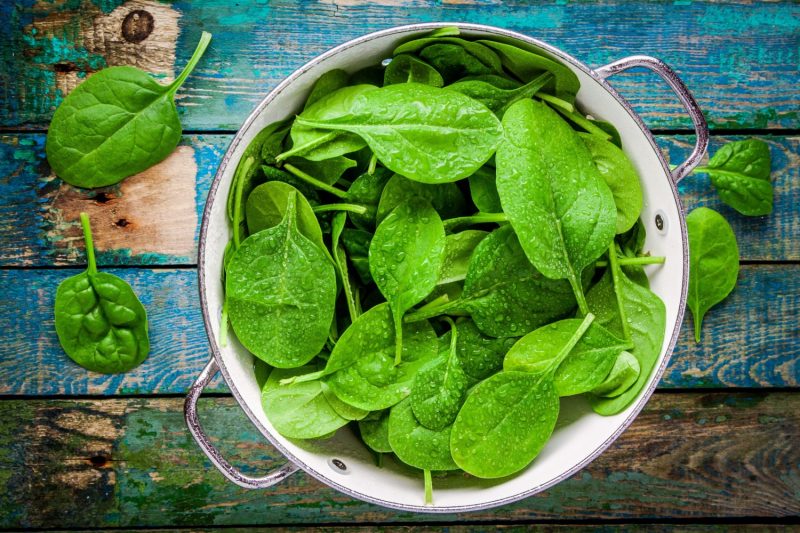
It has the following effects on the body:
- strengthens the immune system;
- has a diuretic and laxative effect, fights constipation, lowers blood pressure;
- has an antioxidant effect, therefore, it can serve as a prophylactic against cancer;
- regulates metabolism;
- lowers blood sugar;
- strengthens the walls of blood vessels;
- helps with problems with teeth and gums;
- supports the work of the pancreas and salivary glands;
- helps in the prevention of osteoporosis;
- fights anemia associated with a lack of iron;
- It has a tonic effect on the body as a whole and soothing on the nervous system, it helps to fight even with seasonal depression;
- reduces the risk of retinal detachment and its degeneration, reduces eye fatigue;
- useful for nails and hair.
Growing and distribution
Spinach is found in nature in the wild. It grows in Central Asia. For eating bred spinach garden. It has been in culture for more than 2000 years, the cultivation process is simple and has long been worked out.
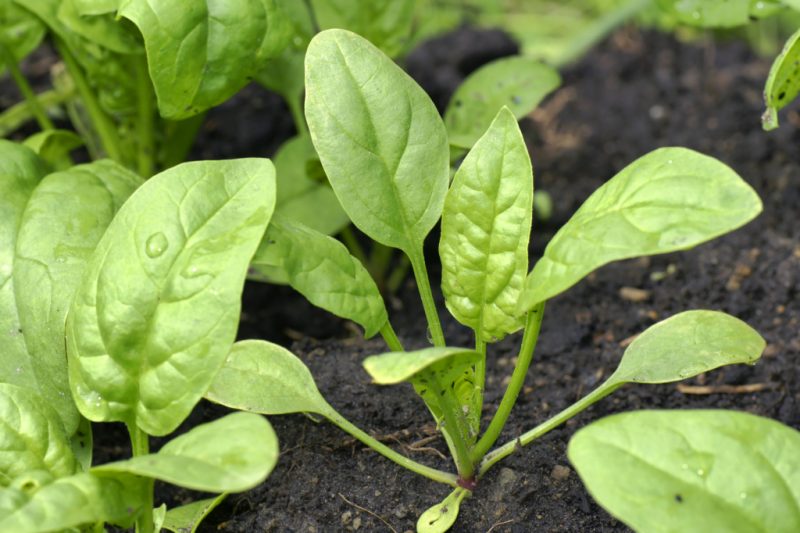
This leafy vegetable is a cold-resistant crop and can be successfully grown in most regions of our country. Since it belongs to the plants of a long day, it is necessary to sow it as early as possible, otherwise instead of a weighty rosette of delicate leaves you can get a rough flower stalk. In favorable conditions, seeds will be planted after flowering, which can be collected and used for sowing. In the middle lane, sowing is also possible at the end of summer, when the day becomes shorter. In hot weather, spinach grows poorly, leaves quickly coarsen.
You can sow spinach in the winter. In the spring, the crop will germinate as soon as the frost ends, and will please the early greenery.
Agricultural Technology Spinach
The culture is undemanding, but you need to know the features of its cultivation.
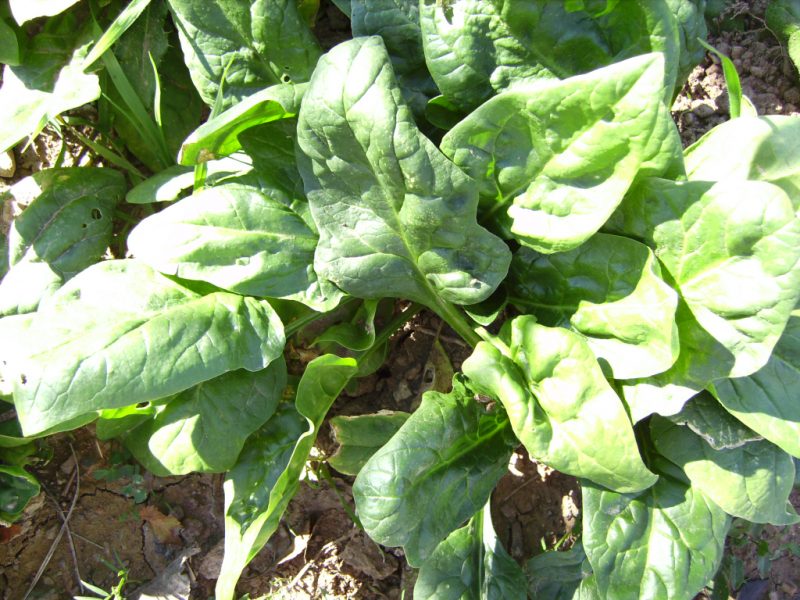
- The best predecessors are legumes, potatoes, different types of cabbage. It grows poorly with radish.
- It prefers spinach, rich in organic sandy loam and loam in places without stagnation of water. The soil should have a neutral reaction.
- Spinach loves lighting all day and protects against cold winds.
- Under digging make up to 7 kg of humus, 1 tbsp. a spoonful of complex fertilizer per square meter m
- Before sowing, it is best to soak the seeds for 48 hours in plain or melt water.
- Sowing is carried out on beds with a distance between rows of about 25 cm, between plants - 10 cm. You can sow and thicker, thinning young plants and eating. Spinach sprouts very quickly after sowing, therefore it is quite suitable as a lighthouse crop for sowing hard-like plants, for example, carrots.
- The spinach vegetation period is short, already 4 weeks after germination, most varieties are suitable for cutting. During this time, the plant will require 2 weeds with simultaneous loosening and one fertilizing with nitrogen fertilizer. In dry weather, crops need to be watered.
For those who do not have their own piece of land, it is possible to grow this valuable leafy crop on the balcony and even on the windowsill.
The use of spinach in medicine
Spinach combines a pleasant taste and huge health benefits. Eat fresh leaf salads more often and prepare various dishes from them, but with a minimum of cooking. It is almost not required, since the leaves are ready for use after thorough washing. In order for its therapeutic effect to appear, use the leaves regularly, at least 350 g per week.
Read also:spinach - outdoor cultivation and care
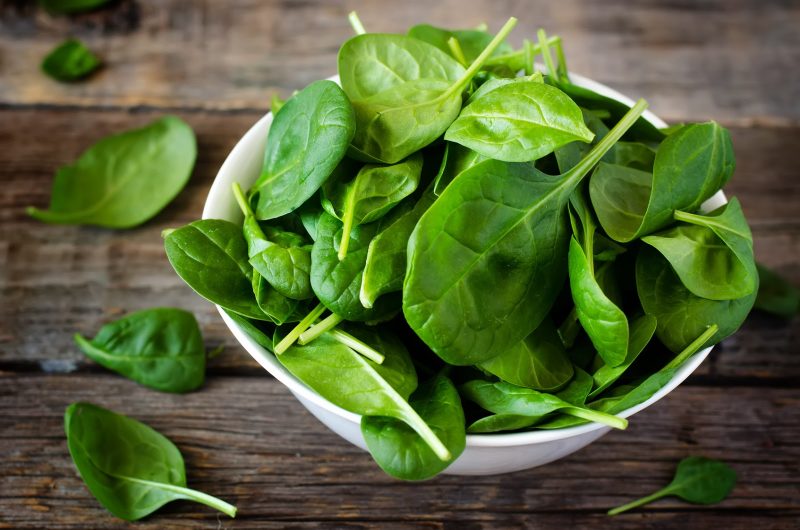
Spinach is a well-studied plant recognized by both official and folk medicine.For the treatment of certain diseases, special preparation of the plant will be required. Most often, juice is squeezed from the leaves.
Apply it as follows:
- to normalize the activity of the gastrointestinal tract - ½ cup 3 times a day;
- to improve the activity of the thyroid gland, relieve headaches, anemia, disorders of the nervous system, spinach juice is mixed with carrot and beetroot in the proportion: 3: 3: 10. It is enough to take only ½ cup of medicine twice a day, but for several weeks.
- fresh leaf salad is eaten as a vitamin remedy;
- they fight atherosclerosis by eating beef liver cooked with spinach. Spinach turns vascular homocysteine into methionine, and the liver provides the necessary vitamin B-12 and other B vitamins. This remedy can also improve the health of the nervous system in depression, for an better effect, take 1 teaspoon of hawthorn, dissolved in 1 tbsp. a spoonful of water. This should be done three times a day before meals.
In cosmetology
Spinach is widely used in cosmetology due to its excellent cleansing properties. It is part of tonics, lotions. But its main application is face masks. They perfectly cope with a fine network of wrinkles on the skin in the eye area, rejuvenate the skin, make it smooth and velvety.
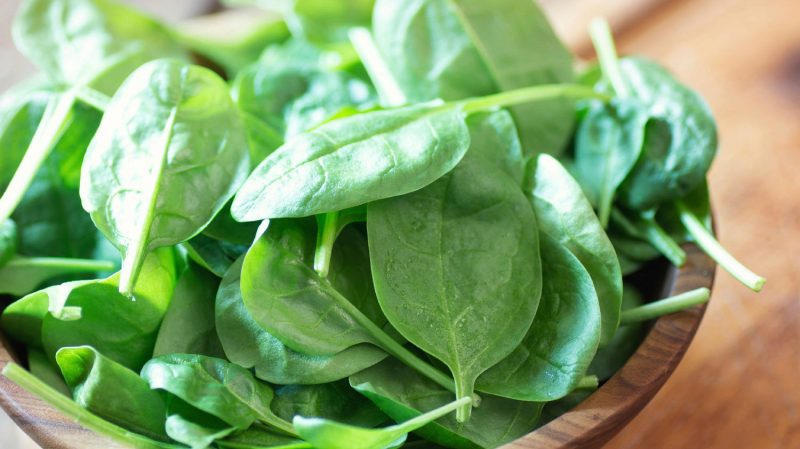
- To make a mask to reduce the wrinkles surrounding the eyes, you need to grind a few leaves of spinach, it is convenient to do this in a coffee grinder, then squeeze the juice out of them, mix it with vitamin A in oil: one teaspoon of the juice is mixed with ten ml of an oil solution. A cream intended for the skin around the eyes is added to the mixture, enough tea. spoons. Keep the mask for about half an hour. It is well removed with a swab dipped in boiled chilled milk, while the skin receives additional nutrition.
- To rejuvenate the skin you need to make a mask of chopped spinach leaves, cooked in milk. Lay the leaves on cheesecloth and hold on the face like a compress. Wipe the skin with lotion. Such a mask is especially good if the skin is irritated.
- To whiten the skin you need to pass the spinach and sorrel leaves through a meat grinder, each tablespoon each. Dilute them with a tablespoon of kefir. Put the mass on the face and neck, hold for 20 minutes. Rinse off the mask with warm water. When washing with milk, the effect will be better.
- The anti-aging mask is cold. Freeze spinach juice in ice tins. Every morning we wipe the face skin with a piece of ice from spinach.
Is it possible during pregnancy and lactation?
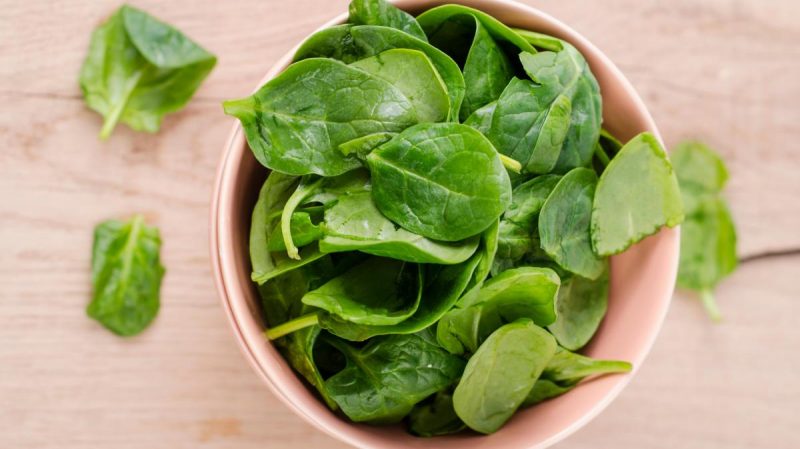
Spinach is very useful during pregnancy for a number of reasons:
- the high content of folic acid, which is in spinach in an accessible form, helps to cope with the threat of miscarriage and contributes to the proper development of the fetus;
- spinach relieves toxicosis;
- Vitamin K, which is rich in vegetables, improves metabolism and helps make up for the lack of calcium;
- a large amount of iron will help to cope with the problem of lowering hemoglobin, which often happens in pregnant women;
- Spinach will help to establish the work of the gastrointestinal tract, eliminate the constipation that so often accompany pregnancy.

The benefits of spinach for women during breastfeeding are also great.
- hormonal background after childbirth is restored faster;
- the nursing mother has more strength;
- spinach is able to cope even with postpartum depression;
- the amount of vitamin D in the body of a nursing mother will correspond to the norm, which is very important for a baby receiving milk;
- if the mother breastfeeding will consume spinach, then the baby will not have constipation, which often happens in newborns.
Do not eat it only to those who have intolerance to this product, but this is rare.
Spinach for children: healthy or bad?
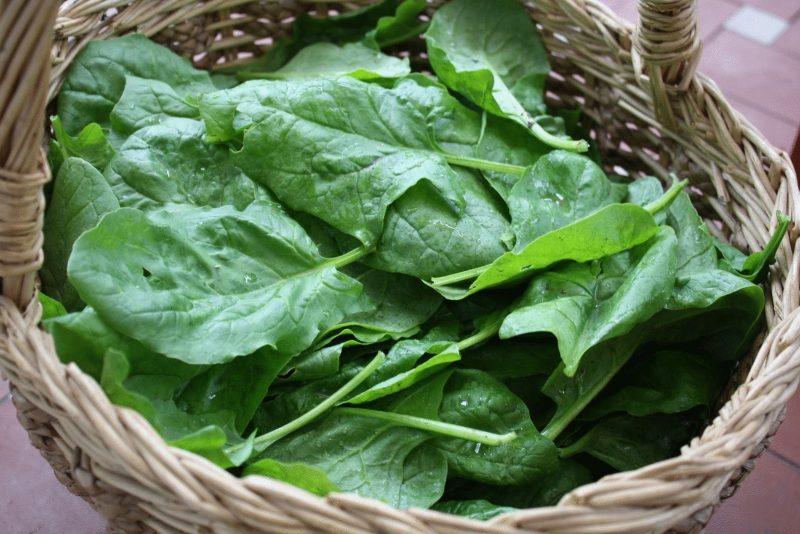
Such a useful food product must be in the children's menu. The German company “Humana” offers spinach puree for children from the age of four months.The famous “Gerber” combines it with rabbit meat and recommends such food from 8 months. What can we say about older children. They can be given spinach in the form of an independent dish or in combination with other food products. Children under 2 years old need to heat the vegetable. Older children can add raw leaves to the salad, but not more than 50 g.
To neutralize oxalic acid, which is a lot in spinach, it is better to cook with the addition of cream or milk.
Harm and contraindications
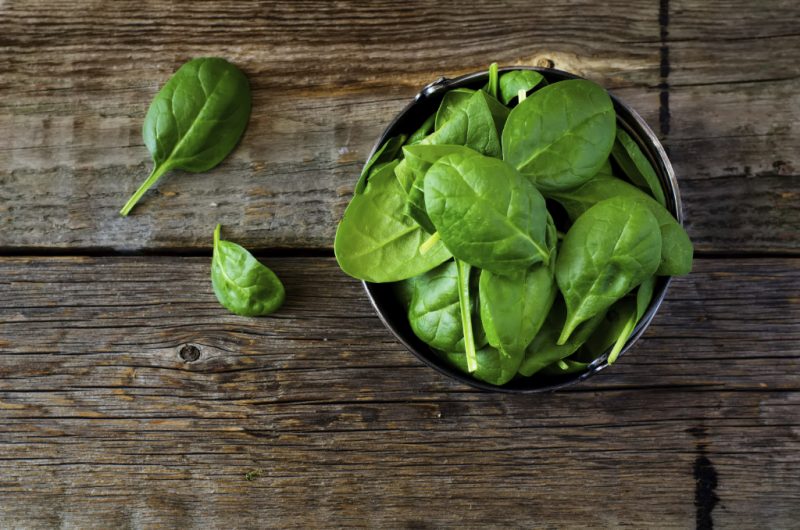
Among all the acids in spinach, there is oxalic. It is because of her that this useful vegetable can not be consumed by everyone. It contributes to the formation of kidney stones and exacerbation of other renal ailments. You should not eat spinach and those who have problems with the liver, duodenum and gall bladder. Spinach is strictly contraindicated in case of gout.












